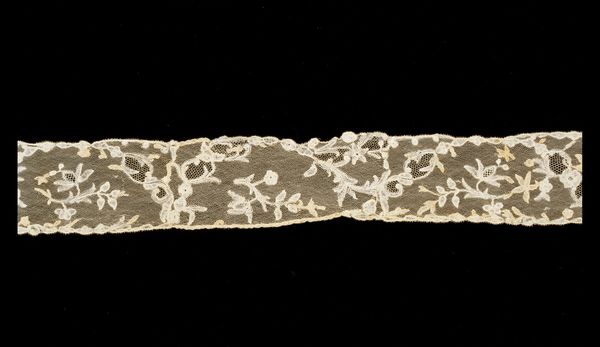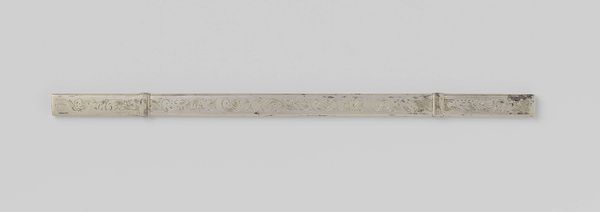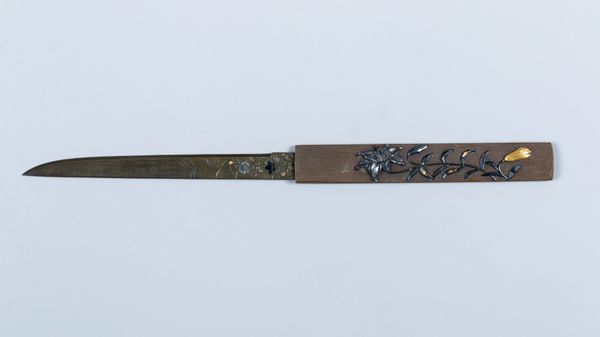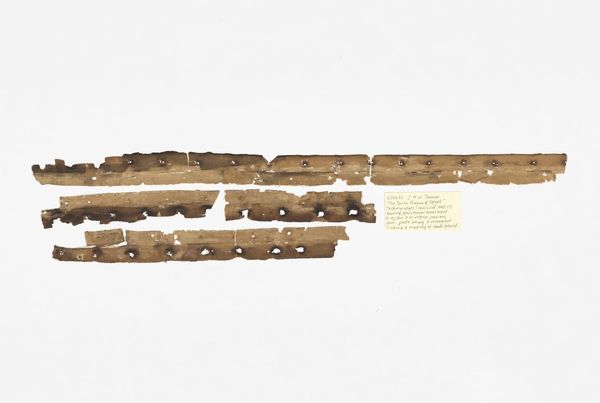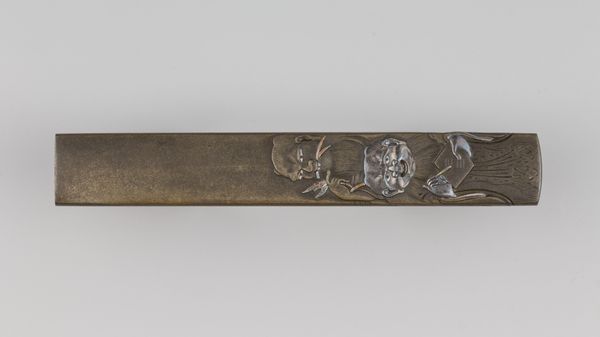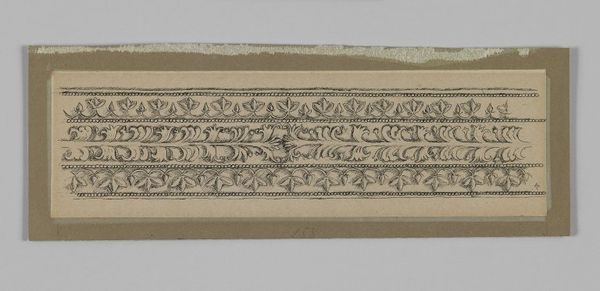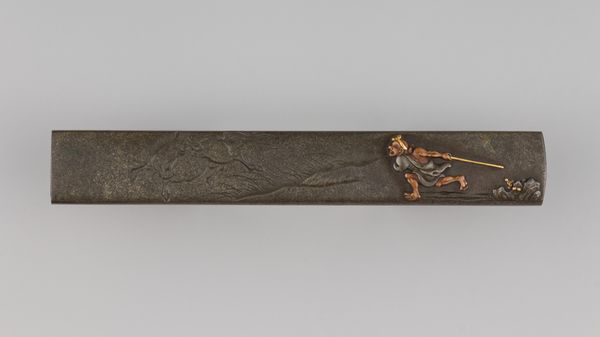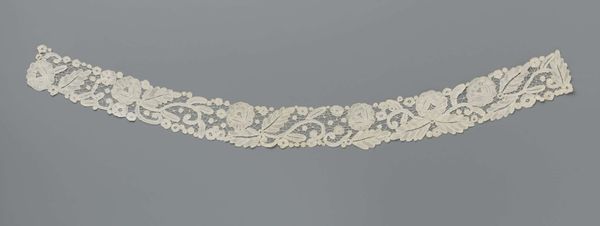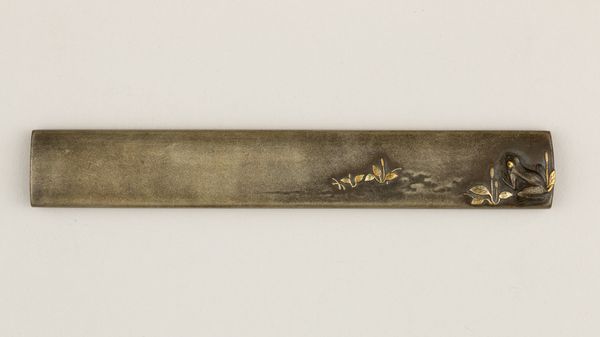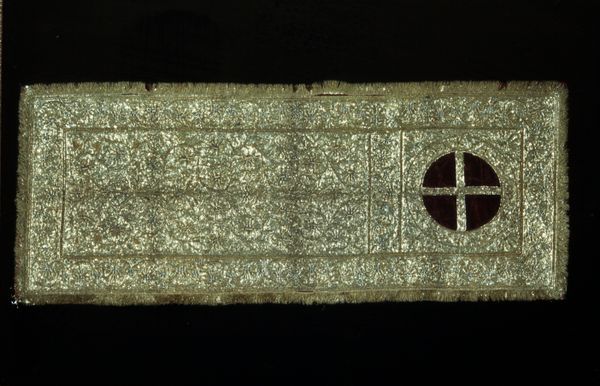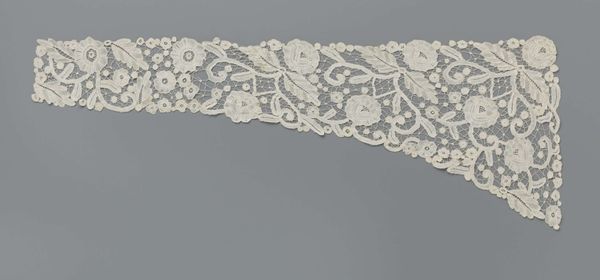
fibre-art, weaving, textile
#
fibre-art
#
pattern
#
weaving
#
textile
#
hand-embroidered
#
fabric design
#
decorative-art
#
imprinted textile
Dimensions: height 80 cm, width 12.5 cm
Copyright: Rijks Museum: Open Domain
Curator: I’m struck by the delicate precision of this lacework. There's a rhythmic repetition, yet each floral motif possesses a distinct character. Editor: The title tells us it's “Sierstuk voor een avondmantel van gemengde kant met rozenhaag,” or "Ornament for an evening cloak with mixed lace and rose hedge" crafted around 1915 by Martha Berkers. The repeating rose motif whispers of hidden gardens and secret desires. Curator: Precisely. The roses carry the weight of centuries of meaning: love, beauty, and sometimes, loss. What do you see in this repeated symbolism? Editor: Well, there's also a fascinating tension between the regularity of the pattern and the organic asymmetry within each floral element. Notice how the composition explores negative space; each space appears intentionally shaped and is integral to the design. It’s an intriguing dance of structure and freedom. Curator: It speaks to a specific era, doesn't it? The decorative arts of the early 20th century yearned for an idealized nature, even as industrialization transformed the world. Rose hedges provided metaphorical barriers from this outside world. It also suggests an introspective retreat, almost a Victorian sentimentality clinging to the edge of modernity. Editor: I appreciate how the craftsmanship transforms a utilitarian material into an art object, a fragment imbued with extraordinary care. Imagine the hours spent, each knot a tiny universe! It forces us to contemplate both the macro of artistic intent and the micro of the labor involved. Curator: It certainly elevates craft into something deeply evocative. By taking it out of everyday use, by showcasing it like this, aren’t we really honoring the artistry that might otherwise go unnoticed? I also see it reflecting a society’s values—its appreciation for beauty, patience, and the slow rhythms of creation in a rapidly changing world. Editor: That resonates deeply with me. Looking closer at these small pieces can lead to big, complex thinking about culture and identity and meaning. It truly is an example of decorative art becoming fine art. Curator: Yes, sometimes the smallest fragment contains a universe of meaning.
Comments
No comments
Be the first to comment and join the conversation on the ultimate creative platform.
